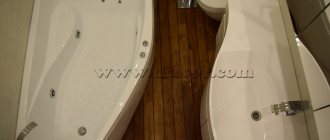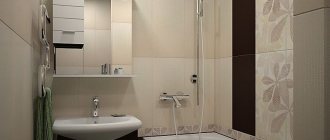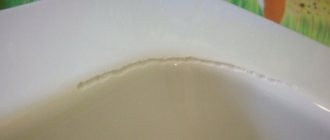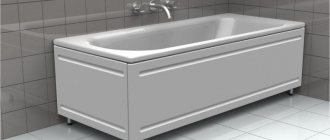Category: Door locks ( 14 ratings, average: 2.36 out of 5)
Published 06/19/2019 · Comments: · Reading time: 5 min · Views: Post Views: 3,962
Open the front door without a key
If the interior door slams shut, if the handle breaks, you shouldn’t get upset and panic, much less call a repairman. You can solve the problem at home yourself, using available tools and the instructions “How to open the lock of an interior door.”
How to open an interior door
Reasons for slamming shutters
Before you start taking any action, you need to find out the reason why the door cannot be opened. Probable reasons:
- the lock in the door handle is jammed or broken;
- the latch did not fit into the hole and moved;
- the tongue does not come out, it is jammed;
- the key left on the back side prevents the door from opening.
To accurately identify the cause, you need to use a flat screwdriver to slightly lift the blade in several places. If you move the raised sash, you can determine in which area it is held. After accurately locating the jammed location, you can choose specific actions.
Latch
A very popular device on doors leading to a bedroom, toilet or bathroom is a latch. Modern models are equipped with rotating miniature handles, which are located on the side of the room. On the reverse side, part of the lock is represented by a plug. Sometimes a key lock is installed instead if we are talking about a living room.
Since sometimes you need to open an interior door lock without a key, you have to look for alternative ways to turn the latch tongue. The easiest way is to use a thin flat object, it can be a screwdriver, a plastic card, a file or a knife; sometimes you can open the lock with your fingernail. This is possible if there is a plug with a slot or recess on the back side. For smooth button plugs, you can use pliers. You just need to turn it and the lock will open.
Sometimes it is possible to move the tongue away using the same devices, but you need to get into the gap between the leaf and the door frame. If the tension is not strong, moving the latch will not be difficult.
A slammed door latch can be opened with a thin object by moving the tab
Another option is a latch. It is installed on top of the door. How to open such a mechanism? You can try to move it through the gap between the door and the trap. If this does not work, then the easiest way is to use force. Typically, self-tapping screws easily fly out of the canvas, although they can damage its surface.
Tongue problem
Another problem: if the mechanism is not equipped with a latch, but the door does not want to open, even if the handle is pressed all the way. Breakage may occur due to improper functioning of the tongue. To solve the problem, you will need a tool with a flat end that will fit into the small gap between the canvas and the box. This tool must be durable so as not to break, as this will further aggravate the situation. A working tool can be a metal ruler or a durable knife.
Remove from hinges
The most common solution to the problem of a closed door, the one that first comes to mind, is, of course, removing the door from the hinges. Since it is not always possible to open a room door without using a key using master keys, this method is the best alternative option.
Regular card loops consist of two parts. If there is enough clearance between the door and the frame, you can try to remove them from the awnings. Sometimes it is possible to unwind the details.
The disadvantage of this method is that it is not always possible to carry out such an operation. This is especially difficult and almost impossible if hidden mechanisms are used.
Removing the door leaf from the hinges is only possible if there are sufficient gaps
Instructions on how to open a mechanism with a broken tongue
Take an ordinary plastic card, insert it between the box and the sash where the handle is located and the jammed part is located. Tilt the card a little and press down lightly. Then you can feel where the instrument moves freely and when it comes into contact with the end of the tongue. Direct the tool at hand towards the door so that the tongue can go into the lock.
Important! When performing this work, the handle is held in the “open” position, and the blade is pulled in the direction of opening.
The situation is more complicated when the person is on the wrong side of the tongue, where the beveled side is. Then you will have to use the same improvised tool, only you need to place it on top and try to use it on the beveled section of the lock in order to push the bolt in. In this situation, you will have to use much more strength and ingenuity than in the first option.
Hiding the lock
What to do to prevent slamming options
You can avoid the above steps if you take care of the lock in advance:
- insert a regular one in the form of a latch handle. Disconnect the latch by unscrewing the lock and pulling out the plate;
- install locks with emergency opening capability;
- Leave spare keys in the same place so that you can access them if necessary.
We looked at several ways to open the bathroom door. Therefore, keep in the bathroom, just in case, tools that may be useful in case the lock jams, so as not to sit until family members arrive. The most prudent thing to do is to install a lock that prevents slamming.
Door lock problem
When it is not possible to open the door structure due to a breakdown of the lock itself, the problem is solved by another method - by acting on the locking mechanism itself.
If the slammed lock is English, then fixing the situation is easy. The mechanism located in the lock is drilled out using an electric drill. After the damaged larva is removed, the false element is hooked so that the bolt is pulled into the lock. Only after this is it recommended to change the lock to a new one so that you do not have to do the same work again.
Drilling out the larva with a drill
Another option that will help open the door is to knock out the lock cylinder. To do this, you need to press it with a hard object that fits in size. You should knock it out with a hammer or something heavy that is nearby.
If the locking system is not English, then the problem becomes more complicated. First, take a close look at the handle. If it is secured with bolts, they are unscrewed with a screwdriver. After removing the handle, determine the part that performs the snap and press it with a pre-prepared thin object. The handle should be down all the way. At the same time pressing on the door handle, the door itself must be pushed in the direction in which it opens. If it is not the latch itself that is broken, but the bolt itself that is jammed, then you cannot do without professional help.
Opening options
The method that should be used to solve this situation directly depends on the locking hardware used in the door structure. You can try to open different locks in different ways. Some complex mechanisms should not be tackled; it is better to immediately call a specialist, and he will open the interior doors using a special tool. But most often, simple door components are installed on the interior panels.
Remove from hinges
A fairly common and easiest way to open an interior door system is to remove the door leaf from the hinges. This option is only possible if you are inside the room, when this fittings are in the access zone. If there is sufficient distance between the leaf and the frame, the door can be easily removed.
For internal systems, simple card loops are most often used, which are sometimes equipped with removable decorative plugs. By unscrewing this element, you can pull out the pin, and the door is simply removed from the opening.
Key lock
When the locking mechanism is additionally equipped with a cylinder for locking with a key, then in this version you can open the interior door lock in the following ways:
- Sometimes you can get rid of a slammed door by pulling the door handle hard several times. In a simple and loose mechanism, the bolt can bounce off on its own with a little physical force.
- You can try to open the lock with a similar key. Some locking mechanisms operate from several similar keys, and not just from those included in the kit.
- Sometimes the lock is turned by a paper clip, a knitting needle, a nail file, or various other thin objects. An improvised master key is inserted into the cylinder and turned, trying to move the levers or pins away. The process requires some skill and accuracy.
- If all else fails, then you can use one of the relatively harmless options and try to remove the lock. Using a screwdriver (file, ruler, knife, etc.), unscrew all visible screws, then remove the handles and decorative trims. Having gained access to the locking mechanism, you need to try to turn it. The cylinder may have to be drilled out.
Using brute force
If none of the above methods succeeded in opening the lock, then brute force is applied to the slammed door. Breaking into an interior door is carried out using the following force methods:
- You can cut off the hinges along the plate or hinge axis so as not to damage the blade itself and the locking mechanism. This is not possible with hidden fittings.
- If the lock latch is clearly visible in the gap between the door leaf itself and the frame, then it is cut off using a hacksaw. You can use a grinder, but you will have to take measures to protect the door from sparks.
- In the most extreme case, the door leaf is knocked out of the frame. This is acceptable for structures that do not have high strength or in the absence of the necessary devices, as well as if it is necessary to urgently open the door to prevent other more severe consequences.
- The blade can be pressed away from the jamb using a chisel, large screwdriver or pry bar. The tool is inserted into the gap between the door frame and the door in the area where the latch tab is located, then you need to try to force it back to the desired open position or remove it from the hole in the strike plate.
- Drilling a hole in the locking mechanism cylinder will keep the entire door unit intact, but will require replacing the lock. The narthex mechanism is grasped with a thin tool through the hole made, and the crossbars are returned back to the locking device.
After using these methods, you will most likely have to change the fittings, restore the door jamb or door leaf. Sometimes it may be necessary to completely replace the entire door along with the frame, so brute force is used as a last resort.
Latch on interior door
Situations quite often occur when the spring in the latch breaks, and the locking tongue does not move when you press the door handle. You can open a closed door by moving the latch. You will need a thin screwdriver, scissors, a knife, a metal ruler, a plastic card, a file or any other thin and durable device. You need to place the tool in the gap between the door jamb and the leaf at the location of the locking mechanism and, carefully pressing the tool on the tongue, push it towards the lock and remove it from the strike plate.
This method can be used if the side of the locking device where the tongue has a bevel is accessible, otherwise it is difficult to fix the tool, because it will slip. A straight latch that does not have a cut can be moved by placing the tool on top. In this case, you need to try to hold the tool at an angle in order to reach the beveled inner side of the tongue. Then press and push the latch while turning the door handle.
Other lock mechanisms
Quite often, key locking devices are used for doors between rooms, which are locked by simply pressing a button. Such a lock can close on its own if the door is slammed hard. A good quality product is equipped with insurance to help cope with such an unpleasant situation. For this purpose, a special hole is provided at the bottom of the outer part of the handle. If you insert a thin device (an awl, a nail, a knitting needle, etc.) into it and then press lightly, the safety mechanism is triggered and the door lock opens.
Some locking structures are additionally equipped with locking handles that prevent the door from opening from the outside. Such mechanisms are often used in toilets and bathrooms. If the lock is jammed, sometimes it is possible to open the door by turning the handle several times in different directions.
If these manipulations are unsuccessful, you will have to open the locking device. To gain access to the locked mechanism, you need to remove the decorative trim. It is removed by first unscrewing the screws using a screwdriver, ruler, knife, nail file or any similar object, then the lock is unlocked by pressing the locking device and simultaneously turning the handle.
The key was left on the back side of the lock
This problem occurs often. This problem can be solved without a destructive process, without damaging either the lock or the canvas. The solution is simple:
- place some fabric or paper under the canvas;
- using a knitting needle or something sharp that is nearby, try to push the key out of the keyhole;
- the key should fall onto the underlying paper, which is pulled in its direction;
- For your part, use the key and open the door.
This method is practical if the lock design provides for a keyhole on both sides of the interior door. This is easy to do if the key is not turned.
Releasing the key from the keyhole
What to do if the bathroom door is jammed
The bathroom door is jammed, how to open it without breaking into it. First of all, you should try to determine the cause of the jam. Eliminate jamming based on the cause:
- This often happens with wooden doors due to high humidity in the bathroom. Over time, wood absorbs moisture and swells, which leads to jamming. You can cope with the situation by drying the door with a hair dryer or heater;
- Possible swelling or cracking of the paint on the door leaf, which prevents normal opening. You can remove paint with a scraper or other sharp object;
- jammed the lock. Lubricate it with machine oil by pouring it into an oil can and dripping it into the holes. Turn the key several times so that the oil is distributed evenly throughout all parts of the mechanism;
- due to skewed hinges and shrinkage of the house, the door may jam in one specific place. Try driving a wedge, screwdriver or chisel into it. At this time, make an effort to put the door leaf in place.
If the door to the bathroom is closed from the inside, and none of the methods described above was able to open it, all that remains is to break it. Try to lean with your shoulder and push the door out. To avoid damaging your joints, place a folded towel in several layers on your shoulder. If it doesn't work, kick it out. It is recommended to hit the lock area, since this is the most vulnerable spot in the door.
The knocking noises may cause disturbance to neighbors, who will call the police. Therefore, in order not to disturb the peace of people, contact housing and rescue services or the rescue service. Usually there are specialists who can open any door in a few minutes.
Castle secrets
Frequent slamming of interior doors has led to manufacturers using simple but practical designs for modern locks. Such locking elements have a keyhole on one side only, and on the reverse there is a button that blocks the movement of the locking system when pressed.
Doors can slam shut in different situations, and if none of the above opening options is suitable, you can use another method. It is suitable if the doors have glazing. The glass is removed by first removing the slats that hold it in place. As a last resort, the insert is broken to make it possible to reach the locking structure. Of course, after this method you will have to replace the damaged element.
Methods for opening a slammed door are shown in this video:
How to open the door yourself?
The resolution of this situation depends on who locked themselves in and why, and most importantly, in which room of the house. If you find yourself locked inside a toilet, getting out without help will be difficult. And if a child accidentally locks himself in the living room, the situation requires prompt resolution.
How to open a slammed interior door without a key depends on the circumstances and complexity of the locking mechanism:
- most often they use a handy master key - an object that can fulfill this role;
- you can disassemble the fittings if you find something like a screwdriver in the house;
- the sash can be removed from its hinges if time does not allow resorting to other methods;
- after all, an interior door can be knocked down if physical strength allows.
The latter method is, of course, undesirable.
Prevention measures
We must take care in advance to avoid ending up in such a situation. For this:
- Provide spare keys for all doors with tags indicating which door they open, put them in a box or bag and put them in some secluded place that cannot be locked with a key (mezzanine in the hallway, top shelf in the closet, closet in the hallway).
- Install locks in the apartment that provide the possibility of emergency opening from the outside (usually with a pin or plate).
- If locking on the doors is needed only from pets or against drafts, then it is advisable to limit yourself to installing conventional latch handles. On installed handle locks, the twist latch can be disabled. To do this, you need to unscrew the handle with the lock and shorten or remove the plate connecting the lock to the latch.
We recommend: What to do with shoes to prevent chafing?
Drastic measures for unlocking interior doors
If the wooden door to the toilet, bathroom or balcony cannot be opened, then you will have to resort to more serious methods, and try to damage the door leaf as little as possible.
- Inspect the hinges. If possible, carefully remove or knock out the inner rod. Then the door can be opened “in the opposite direction,” that is, from the side of the awnings.
- Remove the casing and cut out a small part of the box where the metal plate for the bolt (tongue) of the lock is located.
- Insert an ax or nail puller into the gap between the frame and the door leaf and press the door so that the lock disengages from the frame.
It is clear that after using such methods, the door will most likely have to be repaired.











